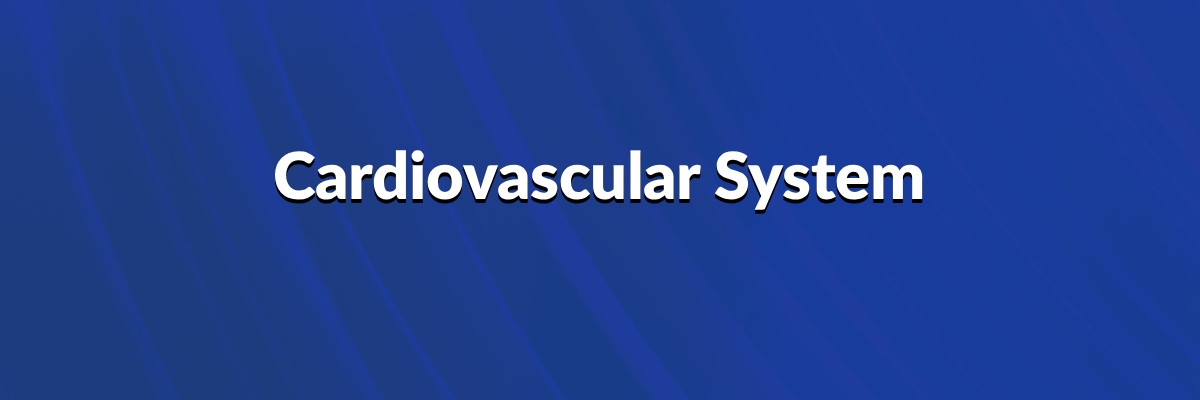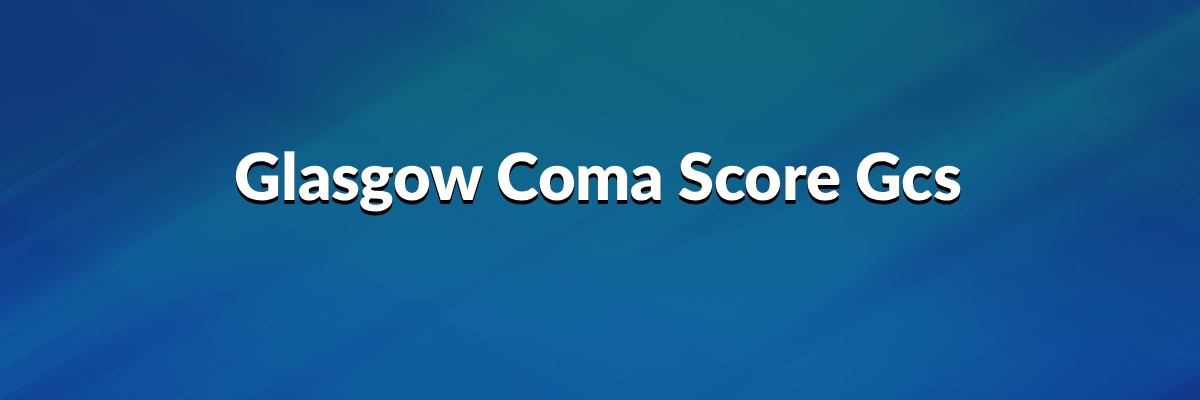- Blood volume: children (65-70 cc/kg); adult (80-100 cc/kg)
- Pre-load = end-diastolic ventricular pressure
- Cardiac tamponade: Beck’s triad of increased venous pressure, decreased arterial pressure, and muffled heart sounds
- Homan’s sign: calf pain with forcible dorsiflexion of the foot, associated with lower extremity deep venous thrombosis.
- Levine’s sign: clenched fist over the chest while describing chest pain: associated with angina and acute myocardial infarction.
- Quinke’s sign: alternating blushing and blanching of the fingernail following light compression: seen in aortic regurgitation.
Managing Pediatric BP
A child’s required cardiac output can be double that of an adult; it is related to an increased metabolic rate and increased oxygen consumption. Blood pressure is dependent on stroke volume, myocardial contractility, systemic vascular resistance and heart rate. In the child, stroke volume, myocardial contractility, or systemic vascular resistance are relatively invariable. Blood pressure is almost entirely rate dependent. Since children show a tendency toward vagal response to many stimuli; monitoring of the heart rate is critical. Bradycardia in children invariably leads to hypotension.
Fetal Circulation

Blood in umbilical vein has a Po2 of ≈ 30 mm Hg and is ≈ 80% saturated with O2. Umbilical arteries have low O2 saturation
3 important shunts:
- Blood entering fetus through the umbilical vein is conducted via the ductus venosus into the IVC, bypassing hepatic
circulation. - Most of the highly Oxygenated blood reaching the heart via the IVC is directed through the foramen Ovale and pumped
into the aorta to supply the head and body. - Deoxygenated blood from the SVC passes through the RA -> RV -> main pulmonary artery -> Ductus arteriosus -> Descending aorta; shunt is due to high fetal pulmonary artery resistance (due partly to low O2 tension).
At birth, infant takes a breath;
- ↓ resistance in pulmonary vasculature -> ↑ left atrial pressure vs right atrial pressure; foramen ovale closes (now called fossa ovalis)
- ↑ in O2 (from respiration) and ↓ in prostaglandins (from placental separation) → closure of ductus arteriosus.
- Indomethacin helps close PDA → ligamentum arteriosum (remnant of ductus arteriosus).
- Prostaglandins keep PDA open.
Anatomy of the Heart

- SA and AV nodes are supplied by branches ofthe RCA. Infarct may cause nodal dysfunction (bradycardia or heart block).
- Right-dominant circulation (85%) = PDA arises from RCA.
- Left-dominant circulation (8%) = PDA arises from LCX.
- Codominant circulation (7%) = PDA arises from both LCX and RCA.
- Coronary artery occlusion most commonly occurs in the LAD.
- Coronary blood flow peaks in early diastole.
Cardiac Output
- Cardiac Output (CO) = stroke volume (SV) × heart rate (HR)
- Mean arterial pressure (MAP) = CO × total peripheral resistance (TPR) = 2⁄3 diastolic pressure + 1⁄3 systolic pressure
- Pulse pressure = systolic pressure – diastolic pressure
- Pulse pressure is proportional to SV, inversely proportional to arterial compliance.
- ↑ pulse pressure in hyperthyroidism, aortic regurgitation, aortic stiffening (isolated systolic hypertension in elderly), obstructive sleep apnea (↑ sympathetic tone), exercise (transient).
- ↓ pulse pressure in aortic stenosis, cardiogenic shock, cardiac tamponade, advanced heart failure (HF)
- Stroke Volume (SV) = end-diastolic volume (EDV) − end-systolic volume (ESV)
- Ejection Fraction (EF) = SV/EDV = (EDV – ESV)/EDV
- During the early stages of exercise, CO is maintained by ↑ HR and ↑ SV. During the late stages of exercise, CO is maintained by ↑ HR only (SV plateaus)
- Normal EF: 60-80%
Pressure-Volume Loops and Cardiac Cycle

Phases of the Left Ventricle
- Isovolumetric contraction—period between mitral valve closing and aortic valve opening; period of highest O2 consumption
- Systolic ejection—period between aortic valve opening and closing
- Isovolumetric relaxation—period between aortic valve closing and mitral valve opening
- Rapid filling—period just after mitral valve opening
- Reduced filling—period just before mitral valve closing
- The black loop represents normal cardiac physiology.

Heart Sounds
- S1—mitral and tricuspid valve closure. Loudest at mitral area.
- S2—aortic and pulmonary valve closure. Loudest at left upper sternal border.
- S3—in early diastole during rapid ventricular filling phase. Associated with ↑ filling pressures (eg, mitral regurgitation, HF) and more common in dilated ventricles (but can be normal in children and young adults).
- S4—in late diastole (“atrial kick”). Best heard at apex with patient in left lateral decubitus position. High atrial pressure. Associated with ventricular noncompliance (eg, hypertrophy). Left atrium must push against stiff LV wall. Consider abnormal, regardless of patient age
Splitting
Normal Splitting
Inspiration -> drop in intrathoracic pressure -> ↑ venous return > ↑ RV filling -> ↑ RV stroke volume -> ↑ RV ejection time -> delayed closure of pulmonic valve

Auscultation of the Heart

| BEDSIDE MANEUVER | EFFECT |
|---|---|
| Inspiration (↑ venous return to right atrium) | ↑ intensity of right heart sounds |
| Hand grip (↑ afterload) | ↑ intensity of MR, AR, and VSD murmurs ↓ hypertrophic cardiomyopathy and AS murmurs MVP: later onset of click/murmur |
| Valsalva (phase II), standing up (↓ preload) | ↓ intensity of most murmurs (including AS) ↑ intensity of hypertrophic cardiomyopathy murmur MVP: earlier onset of click/murmur |
| Rapid squatting (↑ venous return, ↑ preload, ↑ afterload) | ↓ intensity of hypertrophic cardiomyopathy murmur ↑ intensity of AS, MR, and VSD murmurs MVP: later onset of click/murmur |
Heart Murmurs
Systolic Heart Murmurs
Aortic Stenosis
- Crescendo-decrescendo murmur.
- Loudest at heart base; radiates to carotids.
- Most commonly due to age-related calcification in older patients (> 60 years old) or in younger patients with early-onset calcification of bicuspid aortic valve.
- Treatment: ↓ afterload, ↓ activity; AV replacement

Mitral/Tricuspid Regurgitation
- Holosystolic, high-pitched “blowing murmur.”
- Loudest at apex and radiates toward axilla.
- Often due to ischemic heart disease (post-MI), MVP, LV dilatation.

Mitral Valve Prolapse
- Late systolic crescendo murmur with midsystolic click (MC; due to sudden tensing of chordae tendineae).
- Best heard over apex. Loudest just before S2.
- Caused by myxomatous degeneration (1° or 2° to connective tissue disease such as Marfan or Ehlers-Danlos syndrome), rheumatic fever, chordae rupture.

Ventricular Septal Defect
- Holosystolic, harsh-sounding murmur.
- Loudest at tricuspid area.

Diastolic Heart Murmurs
Aortic Regurgitation
- High-pitched “blowing” early diastolic decrescendo murmur.
- Wide pulse pressure.
- Often due to aortic root dilation, bicuspid aortic valve, endocarditis, rheumatic fever.
- Progresses to left HF.

Mitral Stenosis
- Follows opening snap (OS; abrupt halt in leaflet motion in diastole due to fusion at leaflet tips).
- Delayed rumbling mid-to-late diastolic murmur (↓ interval between S2 and OS correlates with ↑ severity).

Continuous Heart Murmurs
Patent Ductus Arteriosus
- Continuous machine-like murmur.
- Loudest at S2.
- Best heard at left infraclavicular area.

Regurgitation
- The perioperative goals of managing mitral regurgitation are to promote forward flow by decreasing afterload and to maintain a normal to slightly increased heart rate.
Stenosis
- The principal hemodynamic goals are maintaining a slower to normal sinus rhythm and to avoid tachycardia, large increases in cardiac output, and both hypovolemia and fluid overload by judicious fluid therapy.
Myocardial Action Potential

- Phase 0 = rapid upstroke and depolarization—voltage-gated Na+ channels open.
- Phase 1 = initial repolarization—inactivation of voltage-gated Na+ channels. Voltage-gated K+ channels begin to open.
- Phase 2 = plateau—Ca2+ infux through voltage-gated Ca2+ channels balances K+ effux. Ca2+ infux triggers Ca2+ release from sarcoplasmic reticulum and myocyte contraction.
- Phase 3 = rapid repolarization—massive K+ effux due to opening of voltage-gated slow K+ channels and closure of voltage-gated Ca2+ channels.
- Phase 4 = resting potential—high K+ permeability through K+ channels.
Pacemaker Action Potential

Occurs in the SA and AV nodes. Key differences from the ventricular action potential include:
- Phase 0 = upstroke—opening of voltage-gated Ca2+ channels. Fast voltage-gated Na+ channels are permanently inactivated because of the less negative resting potential of these cells. Results in a slow conduction velocity that is used by the AV node to prolong transmission from the atria to ventricles.
- Phases 1 and 2 are absent.
- Phase 3 = inactivation of the Ca2+ channels and ↑ activation of K+ channels -> ↑ K+ effux.
- Phase 4 = slow spontaneous diastolic depolarization due to If (“funny current”). If channels responsible for a slow, mixed Na+/K+ inward current; different from INa in phase 0 of ventricular action potential. Accounts for automaticity of SA and AV nodes. The slope of phase 4 in the SA node determines HR. ACh/adenosine ↓ the rate of diastolic depolarization and ↓ HR, while catecholamines ↑ depolarization and ↑ HR. Sympathetic stimulation ↑ the chance that If channels are open and thus ↑ HR.
EKG Interpretation
- The flattened T-waves are consistent with hypokalemia, however in order to correct his potassium level he should have his magnesium level adjusted as well
- Ischemic tendencies would be evidenced by the presence of ST depression or inverted T waves.
- Excessively tall QRS complexes may indicated ventricular hypertrophy
- Prolonged PR intervals indicate conduction delay at the AV node
- Biphasic P waves are indicative of atrial hypertrophy.
- Confirm details: name, DOB, date and time EKG performed
- Heart rate
- Number of boxes on EKG strip in R-R interval. HR = 300/#boxes
- Irregular heart rate: # of QRS complex in EKG strip (typically 10s) and x6
- Cardiac axis
- P waves
- The PR interval should be between 120-200 ms (3-5 small squares)
- If P waves are absent and there is an irregular rhythm it may suggest a diagnosis of atrial fibrillation.
- PR–interval: identify any type of block
- Ischemic tendencies would be evidence by the presence of ST depression or inverted T waves.
- Excessively tall QRS complexes may indicated ventricular hypertrophy.
- Biphasic P waves are indicative of atrial hypertrophy
- Massive pulmonary embolism will show tachycardia, hypotension, hypoxemia and right axis deviation on ECG
- Flattened T-wave: hypokalemia (replenish Mg first)
Electrocardiogram
- Conduction pathway—SA node -> atria -> AV node -> bundle of His -> right and left bundle branches -> Purkinje fibers -> ventricles; left bundle branch divides into left anterior and posterior fascicles.
- SA node “pacemaker” inherent dominance with slow phase of upstroke.
- AV node—located in posteroinferior part of interatrial septum. Blood supply usually from RCA. 100-msec delay allows time for ventricular filling.
- Pacemaker rates—SA > AV > bundle of His/Purkinje/ventricles.
- Speed of conduction—Purkinje > atria > ventricles > AV node
- P wave—atrial depolarization. Atrial repolarization is masked by QRS complex.
- PR interval—time from start of atrial depolarization to start of ventricular depolarization (normally < 200 msec).
- QRS complex—ventricular depolarization (normally < 120 msec).
- QT interval—ventricular depolarization, mechanical contraction of the ventricles, ventricular repolarization.
- T wave—ventricular repolarization. T-wave inversion may indicate ischemia or recent MI.
- ST segment—isoelectric, ventricles depolarized.

Torsades De Pointes
- Polymorphic ventricular tachycardia, characterized by shifting sinusoidal waveforms on ECG; can progress to ventricular fibrillation (VF). Long QT interval predisposes to torsades de pointes. Caused by drugs, ↓ K+, ↓ Mg2+, congenital abnormalities.
- Tx: magnesium sulfate. Magnesium should be considered the first drug of choice in the treatment of Torsades de pointes. It is administered as magnesium sulfate 1 to 2 grams over 1 to 2 minutes. Traditional anti-arrhythmic therapy is not likely to be successful.
- Durg-induced long QT (ABCDE)
- AntiArrhythmics (Class IA, III)
- AntiBiotics (eg. Macrolides)
- Anti’C‘ychotics (eg. Haloperidol)
- AntiDepressants (eg. TCAs)
- AntiEmetics (eg. Odansetron)

Supraventricular Tachycardia
Supraventricular Tachycardia
- Vagal maneuvers, such as the Valsava maneuver can be tried first. Vagal maneuvers are most effective if attempted immediately after onset. Adenosine is the first drug of choice if vagal maneuvers are ineffective.
Unstable ventricular tachycardia
- The patient is presenting with an unstable ventricular tachycardia which is treated with prompt defibrillation.
Wolff-Parkinson-White Syndrome
- Most common type of ventricular pre-excitation syndrome.
- Abnormal fast accessory conduction pathway from atria to ventricle (bundle of Kent) bypasses the rate-slowing AV node -> ventricles begin to partially depolarize earlier -> characteristic delta wave with widened QRS complex and shortened PR interval on ECG.
- May result in reentry circuit -> supraventricular tachycardia.
- Emergent control of atrioventricular tachycardic conduction is by synchronized cardioversion if the patient is unstable. Medical management includes those drugs that can decrease impulse transmission through the accessory pathway (procainamide, amiodarone). Digitalis and verapamil increase AV node refractoriness to conduction and can increase conduction through the aberrant pathway, which can cause serious deterioration in cases of tachycardia of supraventricular origin. Definitive treatment of the stable patient includes radiofrequency ablation of aberrant pathways.
- Drugs such as adenosine, calcium channel blockers, and beta blockers can cause a paradoxical increase in the ventricular response to the rapid atrial impulses of atrial fibrillation. This increase in ventricular response occurs because these agents slow or block conduction through the AV node and in some instances may facilitate conduction to the ventricle via the accessory pathway. The treatment of choice for a atrial fibrillation associated with Wolff-Parkinson-White syndrome is direct cardioversion, which if inappropriate, is then followed preferentially by amiodarone.
- Wolff Parkinson White Syndrome: treatment is direct cardioversion, which if inappropriate, is then followed by amiodarone

ECG Tracings
Atrial Fibrillation
Irregularly irregular pattern with no discrete P waves

Atrial Flutter
Rapid succession of identical, back-to back atrial depolarization; “Sawtooth” appearance

Ventricular Fibrillation
Completely erratic rhythm; fatal arrhythmia without CPR/defib

AV Block
1st Degree
Prolonged PR interval (> 200 msec)

2nd Degree AV Block
Mobitz type I
Progressive lengthening of PR interval until beat dropped; regularly irregular

Mobitz type II
Dropped beat not preceded by change in length of PR

3rd Degree (Complete)
Atria and ventricle beat independently; atria > ventricle; *Can be caused by Lyme disease

Reversible Causes of Pulseless Electric Activity
5 H’s
- Acidosis (H+)
- Hypovolemia
- Hypoxia (O2)
- Hypothermia (temp)
- Hypo/hyper(K+)
4 T’s
- Toxins (antidep, BB, CCB, digitalis)
- Tamponade (cardiac)
- Tension pneumo
- Thrombosis (PE, coronary)
Normal Cardiac Pressures

Pulmonary capillary wedge pressure (PCWP; in mm Hg) is a good approximation of left atrial pressure. In mitral stenosis, PCWP > LV end diastolic pressure. PCWP is measured with pulmonary artery catheter (Swan-Ganz catheter).
Ischemic Heart Disease Manifestations
Angina
Chest pain due to ischemic myocardium 2° to coronary artery narrowing or spasm; no myocyte necrosis.
Stable
usually 2° to atherosclerosis; exertional chest pain in classic distribution (usually with ST depression on ECG), resolving with rest or nitroglycerin.
Variant (Prinzmetal)
occurs at rest 2° to coronary artery spasm; transient ST elevation on ECG. Smoking is a risk factor, but hypertension and hypercholesterolemia are not. Triggers may include cocaine, alcohol, and triptans. Treat with Ca2+ channel blockers, nitrates, and
smoking cessation (if applicable).
Unstable
thrombosis with incomplete coronary artery occlusion; +/− ST depression and/or T-wave inversion on ECG but no cardiac biomarker elevation (unlike NSTEMI); ↑ in frequency or intensity of chest pain or any chest pain at rest.
Cardiomyopathy
Dilated Cardiomyopathy
- Systolic dysfunction ensues.
- Eccentric hypertrophy A (sarcomeres added in series)
- Most common cardiomyopathy (90% of cases). Often idiopathic or familial. Other etiologies include chronic Alcohol abuse, wet Beriberi, Coxsackie B viral myocarditis, chronic Cocaine use, Chagas disease, Doxorubicin toxicity, hemochromatosis, sarcoidosis,
peripartum cardiomyopathy. - Findings: HF, S3, systolic regurgitant murmur, dilated heart on echocardiogram, balloon appearance of heart on CXR.
- Treatment: Na+ restriction, ACE inhibitors, β-blockers, diuretics, digoxin, ICD, heart transplant.

Dilated Cardiomyopathy
- Diastolic dysfunction ensues.
- Marked ventricular concentric hypertrophy (sarcomeres added in parallel)
- Hypertrophic obstructive cardiomyopathy (subset)—asymmetric septal hypertrophy and systolic anterior motion of mitral valve p outflow obstruction p dyspnea, possible syncope.
- 60–70% of cases are familial, autosomal dominant (most commonly due to mutations in genes encoding sarcomeric proteins)
- Causes syncope during exercise and may lead to sudden death in young athletes due to ventricular arrhythmia.
- Findings: S4, systolic murmur. May see mitral regurgitation due to impaired mitral valve closure.
- Treatment: cessation of high-intensity athletics, use of β-blocker or non-dihydropyridine Ca2+ channel blockers (eg, verapamil). ICD if patient is high risk.
- Dehydration in patients with this condition acts to increase the outflow tract pressure gradients from the heart and generate an increase in symptoms. This can be exacerbated as well with strenuous activity and result in sudden death. Dehydration and the use of diuretics should be avoided if possible so as not to alter this gradient. Digitalis, nitrates, vasodilators and β ñ adrenergic agonists are also to be avoided.
- Beta-blockers are the mainstay of medical therapy for hypertrophic cardiomyopathy. Angina, dyspnea, and presyncope may all be improved with beta-blockers. Calcium channel blockers are an alternative therapy to beta blockers. ACE inhibitors are not typically used in the treatment of hypertrophic cardiomyopathy.
- Patients with hypertrophic cardiomyopathy are most frequently associated with having increased left ventricular outflow tract obstruction. This occurs in approximately 25% of these patients. It is usually related to narrowing of the subaortic area as sequelae of the apposition of the mitral valve leaflet in juxtaposition to the enlarged interventricular septum. Hypertrophic cardiomyopathy is an autosomal dominant inherited disease at least 50% of the time. There are sporadic forms of the disease due to spontaneous mutations

Heart Failure
- Clinical syndrome of cardiac pump dysfunction p congestion and low perfusion. Symptoms include dyspnea, orthopnea, fatigue; signs include S3 heart sound, rales, jugular venous distention (JVD), pitting edema.
- Systolic dysfunction—reduced EF, q EDV; r contractility often 2° to ischemia/MI or dilated cardiomyopathy.
- Diastolic dysfunction—preserved EF, normal EDV; r compliance often 2° to myocardial hypertrophy.
- Right HF most often results from left HF. Cor pulmonale refers to isolated right HF due to pulmonary cause.
- ACE inhibitors or angiotensin II receptor blockers, β-blockers (except in acute decompensated HF), and spironolactone r mortality. Thiazide or loop diuretics are used mainly for symptomatic relief. Hydralazine with nitrate therapy improves both symptoms and mortality in select patients.
- Congestive heart failure is defined as the inability of the heart to maintain a cardiac output that meets the demands of peripheral organs. Catecholamine output is initially increased to attempt to increase heart rate and contractive force in order to maintain cardiac output. However, this is also accompanied by an increase in peripheral vascular resistance causing increased afterload. Eventually the myocardium cannot compensate and the end-diastolic ventricular volume is increased, due to decreased cardiac output and increased end-diastolic volume blood in left ventricle prior to systole. Myocardial failure can be secondary to coronary artery disease, non-ischemic cardiomyopathy, or longstanding valvular problems such as aortic incompetence.
- Right heart failure causes systemic venous congestion, resulting in jugular venous distension andcausing peripheral edema from lymphatic stasis.
- Left sided heart failure causes pulmonary vascular congestion, leading to pulmonary edema, dyspnea, orthopnea, and changes of pulmonary vasculature on chest radiographs.
- Physical signs of left ventricular CHF include: reduced carotid pulsations, diffuse and laterally displaced apical impulse, palpable and audible 3rd and 4th heart sounds, accentuated pulmonic 2nd sound, inspiratory basilar rales, and right-sided pleural effusion.
- Digitalis toxicity can be enhanced in the hypokalemic state and precipitate serious cardiac dysrhythmias. Normal cardiac ejection fractions are 60-80%, and when < 50% constitute a risk of congestive failure. Normal left atrial pressure is 4-12 mm Hg; when elevated it represents increased preload and increases the work of a compromised myocardium, increasing risk.
Cardiac Transplant
- The appropriate first step would be external pacing if available. If this is not available, a dopamine infusion titrated between 5-20 μg/kg/min would give both alpha and beta effects to raise heart rate and blood pressure. Since this patient’s transplanted sinus node is denervated, atropine would not reverse her bradycardia.
Shock
Shock = state of hypoperfusion to tissues, resulting in decreased tissue oxygen delivery à end result is cell injury and death, organ failure, and death.
· Tissue perfusion (Mean Arterial Pressure) is determined by Cardiac Output (= HR X Stroke Volume) and Systemic Vascular Resistance (SVR):
MAP = CO x SVR
- Main mechanisms underlying shock: Broadly speaking, the cardiovascular system is essentially a plumbing system, involving a pump (heart), the pipes and tank (vasculature), and fluid in the tank (blood). (Sorry, future cardiologists, but it really is that simple).
Problems can occur at each of those levels:
1. Hypovolemic Shock – not enough fluid in the tank
- Hemorrhage (i.e. trauma, GI bleed, etc)
- Severe dehydration
- Capillary leak (SIRS – e.g. severe pancreatitis, sepsis)
2. Cardiogenic Shock – pump malfunction
a) Mechanical – Massive MI (e.g. affecting the LAD, causing LV dysfunction), Acute valvular dysfunction (e.g., chordae tendinae rupture from MI leading to acute MR, endocarditis causing valvular regurgitation), other mechanical problems post-MI (free wall rupture, VSD), also just progression of severe CH
b) Arrhythmogenic – Either tachy- or brady-arrhythmias
- Also consider Iatrogenic – overdose of negative inotropes (beta blockers, CCBs)
3. Distributive Shock – vasodilation of the vasculature – the tank is expanded
- SIRS and Sepsis – most common cause
- Anaphylaxis
- Adrenal Shock (cortisol upregulates alpha receptors and catecholamine production and maintains vascular tone)
- Neurogenic Shock – loss of autonomic innervations of vasculature. Often seen in spinal cord injuries.
4. Obstructive shock – obstruction to the flow through the pump. Important to recognize, since basically all of these require some sort of emergent physical intervention to relieve the obstruction.
- Massive PE
- Cardiac tamponade
- Constrictive Pericarditis
- Tension pneumothorax
- Abdominal compartment syndrome (compresses IVC and heart)
There are certainly clues on exam that can quickly point you towards one direction or another: looking at the BP, is there a wide pulse pressure (more indicative of distributive shock) or a narrow pulse pressure (more indicative of cardiogenic shock, although also hypovolemic and obstructive). Is there fever (i.e. sepsis). Is the JVP elevated? Are the extremities warm, or cold/clammy?







